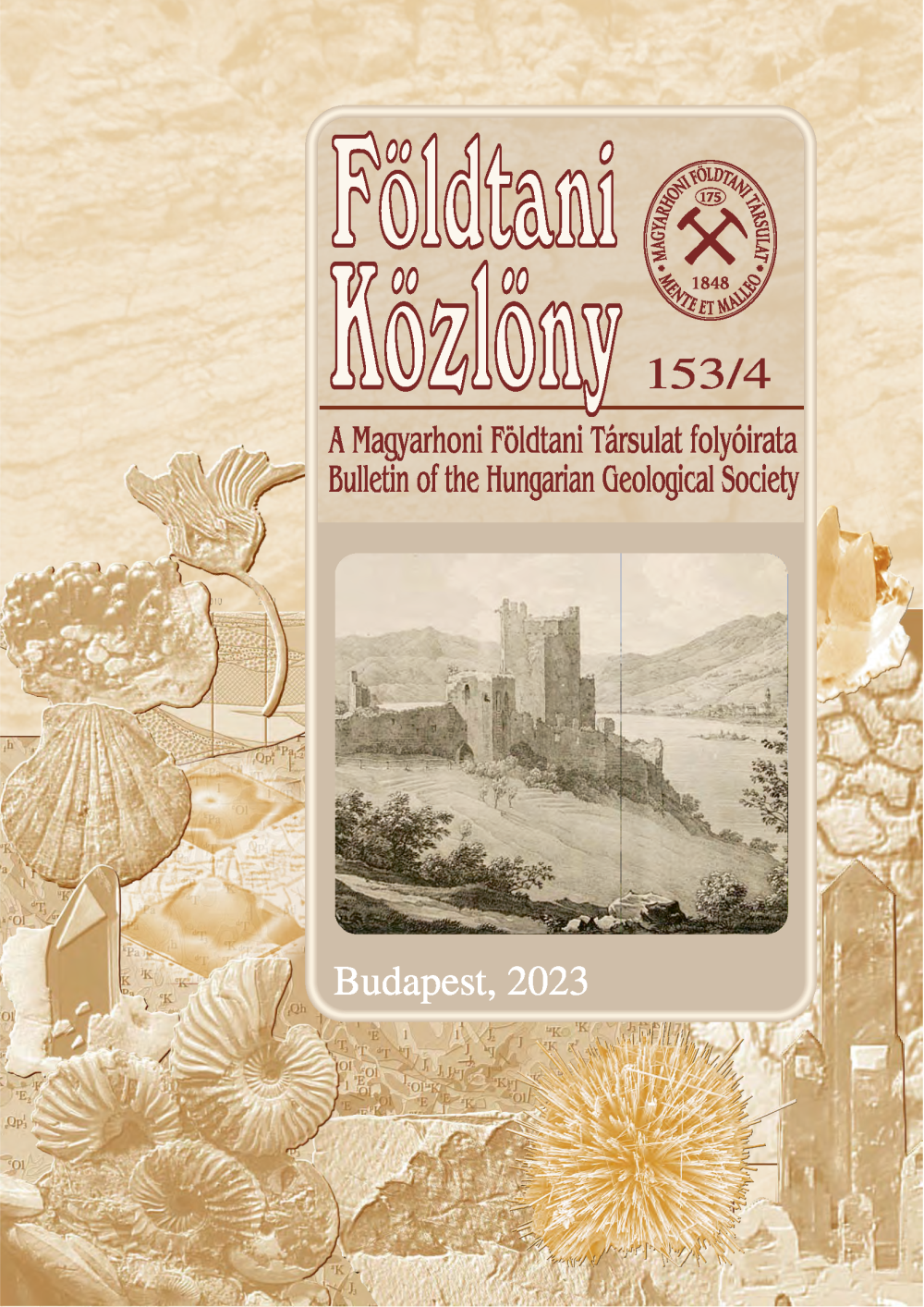Gilbert-type delta in the Pannonian Kálla Gravel near Tapolca, Hungary
Abstract
The main objective of this study is to determine the depositional mechanisms, the environment and controlling
factors producing the architecture of the Kálla Gravel, which unconformably overlies the SW rim of the Transdanubian
Range. The gravel crops out in large, actively quarried and small abandoned pits near to Lesenceistvánd and Uzsabánya.
Three main architectural units can be distinguished based on facies, dip of strata and surfaces of toplap, downlap and/or
erosional truncation.
The lowermost 4–15 m-thick unit is built up of 0.2–0.8 m thick, steep (20–30°), southward dipping beds of clastsupported gravel or sandy gravel. Pebbles commonly show a(t)b(i)-type imbrication. The facies of the middle units are
the same, but their respective thicknesses vary between 1–5 m and show significantly different dip directions towards N,
NE. The uppermost unit is made up of horizontally-bedded sand, pebbly sand and sandy pebble.
The steeply-dipping gravelly units are interpreted as foresets of a shallow-water, Gilbert-type delta prograding — in
the case of the thick, lower unit — southward, and for the middle units strangely sideward to north-east. The horizontal
beds of the upper unit were deposited on the flat-lying delta-plain. These units represent different phases of delta
development. The lowermost units reveal the first step of a relative lake-level rise, followed by deltaic progradation due
to a high rate of sediment input. The upper unit is mainly aggradational, indicating continued lake-level rise; the latter was
again balanced by sedimentation. Although many small-scale deformational structures (slumps, slides, dewatering) can
be seen, these are connected to rapid deposition. Evidence of synsedimentary faulting has not been exposed so far.
Therefore the reconstructed, relative lake-level changes are interpreted as an indication of basin-wide subsidence
combined with climatically induced (increased humidity) water-level rise.











